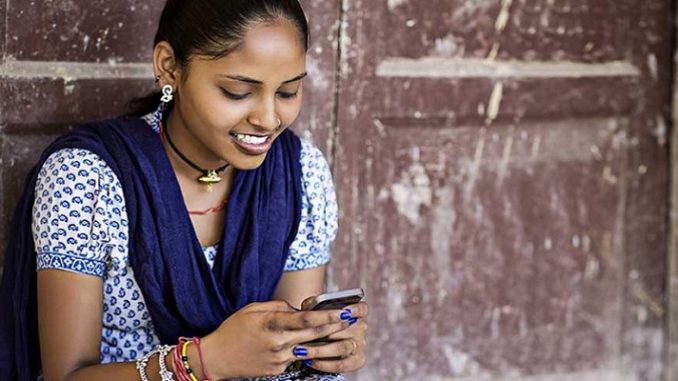
Sahebganj, Jharkhand : For years, Purnima Mahato, 35, walked for miles daily to sell papads and pickles that she prepared. She doesn’t have to do that anymore. Now, she can do everything from marketing her product to receiving her payment just with the swipe of her phone.
If you are from urban India, you might wonder what is so remarkable about someone using her phone to do a few tasks. But for Purnima and others from her village in rural Jharkhand who didn’t even get to complete their schooling, this is achievement and empowerment rolled into one.
Purnima just sends out messages on WhatsApp, which also acts as a marketing tool, and receives orders online. Payment and all other transactions except delivery of products happens over phone.
This has been made possible by the Rural Development Department of Jharkhand, which is distributing smartphones to women entrepreneurs of self help groups (SHG) in the rural areas. This is helping Purnima, a mother of four children, and others like her to become internet friendly and save a lot of trouble of being a entrepreneur in rural areas.
The project was started as an attempt to support the central government’s twin initiatives of digitalisation of the economy including all transactions.
Nilkanth Singh Munda, Jharkhand’s Rural Development Minister, was quoted by IANS as saying,
“The major aim is to encourage more and more digital transactions to achieve a less-cash economy, but at the same time none can deny the immense importance a smartphone has acquired in modern times, especially for business.”
He further added, “The 100,000 smartphones with free network will be handed out to the beneficiaries in the next two months and by 2019 we have plans to hand out 100,000 more smartphones to the SHGs.”
The initiative is expected to go a long way in empowering women socially and economically.
It will also help increase internet penetration in India. According to a recent report, compared to the global internet penetration of 50 percent, only 35 percent of the Indian population uses the internet.
What is problematic though is that this massive gap in internet penetration isn’t just on account of a lack of digital resources. It has also to do with the gender related barriers which reduce the chances of women having access to the internet.
According to The Hindustan Times, out of the 191 million Facebook users in India, only 24 percent percent are female. This can be attributed to the social and cultural biases with regard to women, which ends up in restricted internet access for women and young girls.
But initiatives like this, be it intentional or unintentional, would evetually lead to women gaining autonomy.
Source: YourStory.com

Leave a Reply